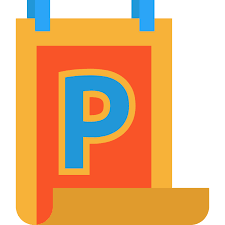We found 142 results that contain "with attachment"
Posted on: #iteachmsu



Posted by
almost 2 years ago

Stage 1: Planning and Requirement Analysis
Requirement analysis is the most important and fundamental stage in SDLC. It is performed by the senior members of the team with inputs from the customer, the sales department, market surveys and domain experts in the industry. This information is then used to plan the basic project approach and to conduct product feasibility study in the economical, operational and technical areas.
Planning for the quality assurance requirements and identification of the risks associated with the project is also done in the planning stage. The outcome of the technical feasibility study is to define the various technical approaches that can be followed to implement the project successfully with minimum risks.
Stage 2: Defining Requirements
Once the requirement analysis is done the next step is to clearly define and document the product requirements and get them approved from the customer or the market analysts. This is done through an SRS (Software Requirement Specification) document which consists of all the product requirements to be designed and developed during the project life cycle.
Stage 3: Designing the Product Architecture
SRS is the reference for product architects to come out with the best architecture for the product to be developed. Based on the requirements specified in SRS, usually more than one design approach for the product architecture is proposed and documented in a DDS - Design Document Specification.
This DDS is reviewed by all the important stakeholders and based on various parameters as risk assessment, product robustness, design modularity, budget and time constraints, the best design approach is selected for the product.
A design approach clearly defines all the architectural modules of the product along with its communication and data flow representation with the external and third party modules (if any). The internal design of all the modules of the proposed architecture should be clearly defined with the minutest of the details in DDS.
Stage 4: Building or Developing the Product
In this stage of SDLC the actual development starts and the product is built. The programming code is generated as per DDS during this stage. If the design is performed in a detailed and organized manner, code generation can be accomplished without much hassle.
Developers must follow the coding guidelines defined by their organization and programming tools like compilers, interpreters, debuggers, etc. are used to generate the code. Different high level programming languages such as C, C++, Pascal, Java and PHP are used for coding. The programming language is chosen with respect to the type of software being developed.
Stage 5: Testing the Product
This stage is usually a subset of all the stages as in the modern SDLC models, the testing activities are mostly involved in all the stages of SDLC. However, this stage refers to the testing only stage of the product where product defects are reported, tracked, fixed and retested, until the product reaches the quality standards defined in the SRS.
Stage 6: Deployment in the Market and Maintenance
Once the product is tested and ready to be deployed it is released formally in the appropriate market. Sometimes product deployment happens in stages as per the business strategy of that organization. The product may first be released in a limited segment and tested in the real business environment (UAT- User acceptance testing).
Then based on the feedback, the product may be released as it is or with suggested enhancements in the targeting market segment. After the product is released in the market, its maintenance is done for the existing customer base.
Requirement analysis is the most important and fundamental stage in SDLC. It is performed by the senior members of the team with inputs from the customer, the sales department, market surveys and domain experts in the industry. This information is then used to plan the basic project approach and to conduct product feasibility study in the economical, operational and technical areas.
Planning for the quality assurance requirements and identification of the risks associated with the project is also done in the planning stage. The outcome of the technical feasibility study is to define the various technical approaches that can be followed to implement the project successfully with minimum risks.
Stage 2: Defining Requirements
Once the requirement analysis is done the next step is to clearly define and document the product requirements and get them approved from the customer or the market analysts. This is done through an SRS (Software Requirement Specification) document which consists of all the product requirements to be designed and developed during the project life cycle.
Stage 3: Designing the Product Architecture
SRS is the reference for product architects to come out with the best architecture for the product to be developed. Based on the requirements specified in SRS, usually more than one design approach for the product architecture is proposed and documented in a DDS - Design Document Specification.
This DDS is reviewed by all the important stakeholders and based on various parameters as risk assessment, product robustness, design modularity, budget and time constraints, the best design approach is selected for the product.
A design approach clearly defines all the architectural modules of the product along with its communication and data flow representation with the external and third party modules (if any). The internal design of all the modules of the proposed architecture should be clearly defined with the minutest of the details in DDS.
Stage 4: Building or Developing the Product
In this stage of SDLC the actual development starts and the product is built. The programming code is generated as per DDS during this stage. If the design is performed in a detailed and organized manner, code generation can be accomplished without much hassle.
Developers must follow the coding guidelines defined by their organization and programming tools like compilers, interpreters, debuggers, etc. are used to generate the code. Different high level programming languages such as C, C++, Pascal, Java and PHP are used for coding. The programming language is chosen with respect to the type of software being developed.
Stage 5: Testing the Product
This stage is usually a subset of all the stages as in the modern SDLC models, the testing activities are mostly involved in all the stages of SDLC. However, this stage refers to the testing only stage of the product where product defects are reported, tracked, fixed and retested, until the product reaches the quality standards defined in the SRS.
Stage 6: Deployment in the Market and Maintenance
Once the product is tested and ready to be deployed it is released formally in the appropriate market. Sometimes product deployment happens in stages as per the business strategy of that organization. The product may first be released in a limited segment and tested in the real business environment (UAT- User acceptance testing).
Then based on the feedback, the product may be released as it is or with suggested enhancements in the targeting market segment. After the product is released in the market, its maintenance is done for the existing customer base.
Disciplinary Content
Posted on: #iteachmsu



Posted by
over 4 years ago

Many people without ADHD have marital problems, so a troubled marriage shouldn’t necessarily be seen as a red flag for adult ADHD. But there are some marriage problems that are likely to affect the relationships of those with ADHD. Often, the partners of people with undiagnosed ADHD take poor listening skills and an inability to honor commitments as a sign that their partner doesn’t care. If you’re the person with ADHD, you may not understand why your partner is upset, and you may feel you’re being nagged or blamed for something that’s not your fault 557
Posted on: #iteachmsu



Posted by
about 5 years ago

Description is the pattern of narrative development that aims to make vivid a place, object, character, or group. Description is one of four rhetorical modes, along with exposition, argumentation, and narration. In practice it would be difficult to write literature that drew on just one of the four basic modesDescription is the pattern of narrative development that aims to make vivid a place, object, character, or group. Description is one of four rhetorical modes, along with exposition, argumentation, and narration. In practice it would be difficult to write literature that drew on just one of the four basic modesDescription is the pattern of narrative development that aims to make vivid a place, object, character, or group. Description is one of four rhetorical modes, along with exposition, argumentation, and narration. In practice it would be difficult to write literature that drew on just one of the four basic modesDescription is the pattern of narrative development that aims to make vivid a place, object, character, or group. Description is one of four rhetorical modes, along with exposition, argumentation, and narration. In practice it would be difficult to write literature that drew on just one of the four basic modesDescription is the pattern of narrative development that aims to make vivid a place, object, character, or group. Description is one of four rhetorical modes, along with exposition, argumentation, and narration. In practice it would be difficult to write literature that drew on just one of the four basic modes.
Disciplinary Content
Posted on: #iteachmsu


Posted by
almost 5 years ago
Written Assignments
Many students with ADHD have particular challenges with written work due to finemotor
skills difficulties, motor planning issues, and difficulty alternating their attention
from a book to their written responses.
Many students with ADHD have particular challenges with written work due to finemotor
skills difficulties, motor planning issues, and difficulty alternating their attention
from a book to their written responses.
Posted on: #iteachmsu


Posted by
over 1 year ago
Achieving work life balance is possible with effective time management. Learning time management tips will not only help you manage your time better but also boost personal productivity. With that said, here are some time management strategies you can try:
https://www.usa.edu/blog/time-management-techniques/
https://www.usa.edu/blog/time-management-techniques/
Disciplinary Content
Posted on: #iteachmsu


Posted by
almost 2 years ago
You and those around you are facing burnout,, a divided culture, seemingly endless conflicts, emotionally exhausted teams, and an undefined path ahead. The future is waiting for your vision, your ideas, your action, and your leadership. The future is listening. The future is now.
Join with Us and talk with us
Join with Us and talk with us
Posted on: #iteachmsu



Posted by
about 5 years ago

PO-Description is the pattern of narrative development that aims to make vivid a place, object, character, or group. Description is one of four rhetorical modes, along with exposition, argumentation, and narration. In practice it would be difficult to write literature that drew on just one of the four basic modesDescription is the pattern of narrative development that aims to make vivid a place, object, character, or group. Description is one of four rhetorical modes, along with exposition, argumentation, and narration. In practice it would be difficult to write literature that drew on just one of the four basic modesDescription is the pattern of narrative development that aims to make vivid a place, object, character, or group. Description is one of four rhetorical modes, along with exposition, argumentation, and narration. In practice it would be difficult to write literature that drew on just one of the four basic modes.
Assessing Learning
Posted on: #iteachmsu


Posted by
almost 5 years ago
Learning a new language this year? This app gets you speaking in just 3 weeks
Anyone can speak a language with Babbel, even if you’re a complete beginner who has never attempted to learn a language before. Here are 5 reasons why there’s nothing holding you back from learning a new language with Babbel.
Anyone can speak a language with Babbel, even if you’re a complete beginner who has never attempted to learn a language before. Here are 5 reasons why there’s nothing holding you back from learning a new language with Babbel.
Assessing Learning
